We improve roof ventilation using proven methods that have been protecting homes for decades. We assess your current airflow, identify problems, and install ventilation components that work together as a complete system. We take time to do each installation properly because we know that good ventilation work prevents moisture problems and extends roof life. We use quality materials and proper installation techniques. It's not complicated work, but it requires understanding how air moves through roof systems and what components work best in our climate. Our ventilation assessment starts with a simple but thorough examination of your attic space and existing ventilation. We look for signs of moisture problems, check air circulation patterns, and identify areas where ventilation is inadequate. We use basic tools like thermometers and visual inspection to understand how your current system is performing. We install ridge vents, soffit vents, and other components using hand tools and proven techniques that ensure proper function and weather resistance. We don't need expensive specialty equipment because proper ventilation installation relies on understanding airflow principles and careful attention to detail.
Roof ventilation services in Suwanee, GA
Get better roof ventilation from your Suwanee neighbors. We've been improving roof airflow in this community for over twenty-four years - with basic hand tools, proven methods, and the kind of careful work that comes from knowing we'll see you around town. No fancy equipment or complicated systems, just straightforward ventilation solutions that help your roof breathe properly and protect your home. From ridge vents to soffit installation, we handle every ventilation job with the same attention to detail we'd want for our own homes. Fair prices, dependable service, and local folks who understand how proper ventilation keeps North Georgia homes comfortable and protected.
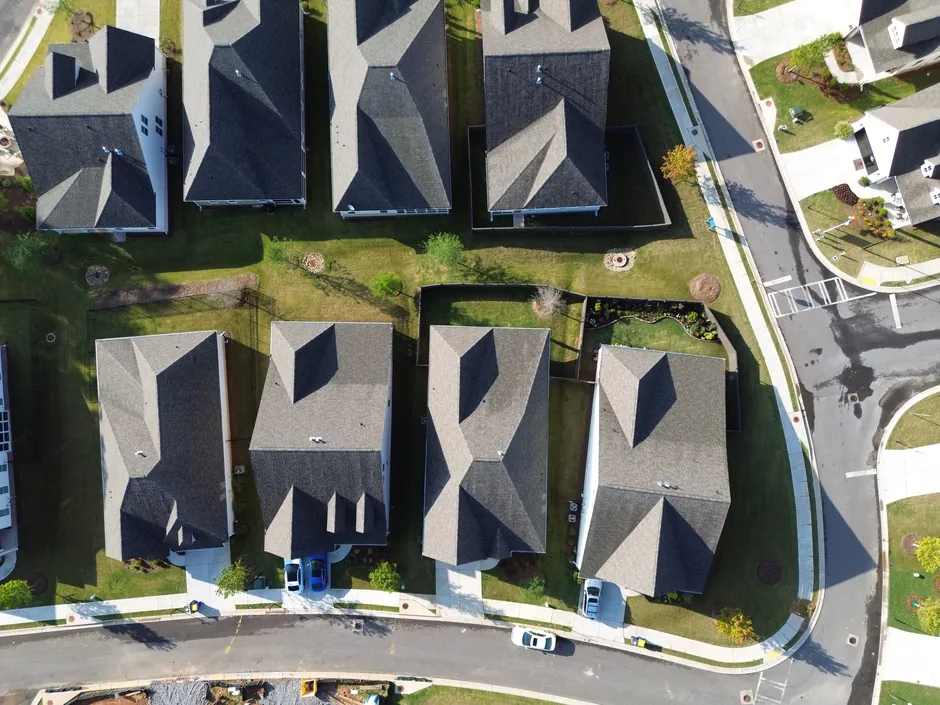
Suwanee's trusted roof ventilation specialists
We're not just roof ventilation contractors who happen to work in Suwanee - we're Suwanee people who specialize in helping roofs breathe properly. Our families have been part of this community for over two decades, we know these neighborhoods like our own streets, and we understand how North Georgia's hot, humid climate affects attic spaces and roofing systems. We've developed straightforward, effective methods for improving roof ventilation using basic tools and proven techniques that have been working for generations. No cutting-edge technology or complicated procedures - just experienced hands and the kind of thorough work that comes from understanding how proper airflow protects homes in our climate. We're licensed and insured because that's the professional way to operate, and we guarantee our ventilation work because we stand behind every installation we complete. When you hire us, you're supporting neighbors who are invested in Suwanee's success and committed to helping our community's homes stay comfortable, energy-efficient, and properly protected.
Ventilation solutions that actually work
Local knowledge that makes a difference
Because we live and work in Suwanee, we understand how North Georgia's climate affects roof ventilation needs. We know how hot, humid summers stress attic spaces, how afternoon thunderstorms test ventilation systems, and how proper airflow helps homes stay comfortable year-round. This local knowledge helps us provide better ventilation solutions for our specific climate. Our children have grown up in this community with the same weather challenges your family faces. We've experienced the same hot summer days when attics become ovens, the same humidity that can cause moisture problems, and the same storms that test roofing systems. This personal experience helps us understand why proper ventilation matters and how to design systems that work in our specific conditions. We know which ventilation methods work best for different types of homes in our area, which materials hold up well in our climate, and which installation techniques provide the most reliable long-term performance. We also understand local building codes and standards that affect ventilation requirements. Our local presence means we're accountable to the community for our work and available for follow-up service when needed. We want every ventilation installation to perform well because our reputation depends on helping our neighbors have comfortable, protected homes.
Complete roof ventilation services for every Suwanee home
Whether you have ventilation problems or want to improve your home's comfort and energy efficiency, we provide comprehensive roof ventilation services for all types of homes throughout Suwanee. Our ventilation services include assessing current airflow, identifying problems, and installing ventilation components that work together to move air properly through your roof system. We work on all types of homes and roof styles in our community. Every ventilation project starts with understanding your specific situation and goals. Are you having comfort problems, moisture issues, or high energy bills that might be related to poor ventilation? Do you want to prevent problems or improve an existing system? Understanding your concerns helps us provide the most effective ventilation solutions. Ventilation assessment includes examining your attic space, checking existing vents, and understanding how air currently moves through your roof system. We look for signs of moisture problems like condensation, mold, or wood damage that indicate poor ventilation. We also check for adequate insulation and proper air sealing that work together with ventilation to control moisture and temperature. Ridge vent installation provides continuous exhaust ventilation along the peak of your roof. Ridge vents are often the most effective type of exhaust ventilation because they take advantage of natural airflow patterns and provide ventilation along the entire roof ridge. We install ridge vents properly to ensure weather resistance while allowing maximum airflow. Soffit vent installation provides intake ventilation that brings fresh air into your attic space. Soffit vents work together with ridge vents to create continuous airflow that removes hot, humid air and replaces it with cooler outside air. We install soffit vents in appropriate locations and sizes to balance intake with exhaust ventilation. Gable vent installation can provide additional ventilation for certain roof designs and situations. Gable vents are installed in the walls at the ends of gabled roofs and can help with both intake and exhaust ventilation depending on wind direction and roof design. We determine when gable vents are beneficial and install them properly. Attic fan installation can provide power ventilation when natural ventilation isn't adequate for your specific situation. While we prefer natural ventilation solutions when possible, powered fans can be helpful in certain circumstances. We install attic fans properly with appropriate controls and safety features.
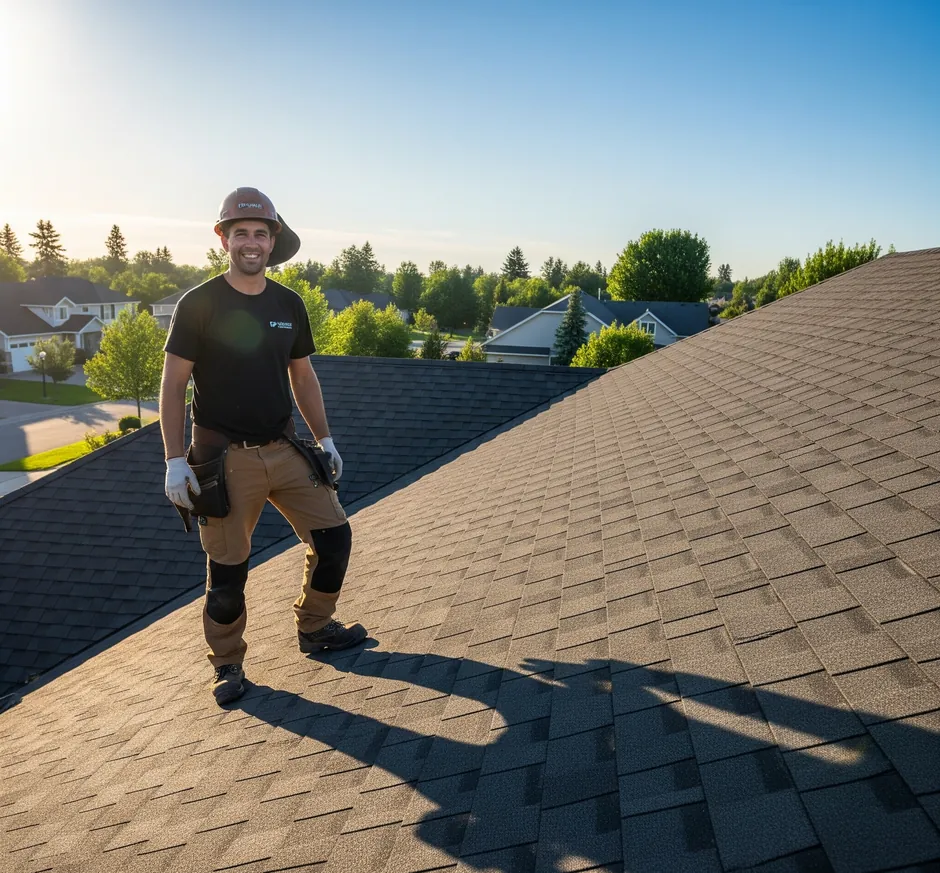
Understanding why roof ventilation matters in North Georgia
North Georgia's hot, humid climate creates specific challenges that make proper roof ventilation especially important for home comfort, energy efficiency, and preventing moisture problems. Understanding why ventilation matters helps homeowners make informed decisions about improving their roof systems and protecting their homes. Summer heat buildup in attics can reach extreme temperatures that stress roofing materials, increase cooling costs, and make homes uncomfortable. Without proper ventilation, attic temperatures can exceed 150 degrees on hot summer days, causing shingles to age prematurely and forcing air conditioning systems to work harder to keep homes cool. High humidity levels common in our area can cause moisture problems in attics if ventilation isn't adequate to remove humid air. Moisture problems can lead to mold growth, wood rot, insulation damage, and other expensive issues that affect both home health and structural integrity. Proper ventilation removes humid air before it can cause problems. Ice dam prevention, while less common in our area, can be important during unusual winter weather. Ice dams form when heat buildup in attics causes snow to melt and refreeze at roof edges. Proper ventilation helps maintain consistent roof temperatures that prevent ice dam formation during cold weather. Energy efficiency improvements from proper ventilation can reduce cooling costs significantly during our long, hot summers. When attics stay cooler through proper ventilation, air conditioning systems don't have to work as hard to maintain comfortable indoor temperatures. This can result in substantial energy savings over time. Roof material protection from proper ventilation extends the life of shingles and other roofing components by preventing excessive heat buildup that accelerates aging. Shingles can last significantly longer when attic temperatures are controlled through proper ventilation. Indoor air quality improvements result from proper ventilation that prevents moisture problems and mold growth in attic spaces. Poor attic ventilation can contribute to indoor air quality problems that affect family health and comfort. Comfort improvements throughout the house result from proper ventilation that helps maintain more consistent temperatures and reduces hot spots that make some rooms uncomfortable during summer weather.
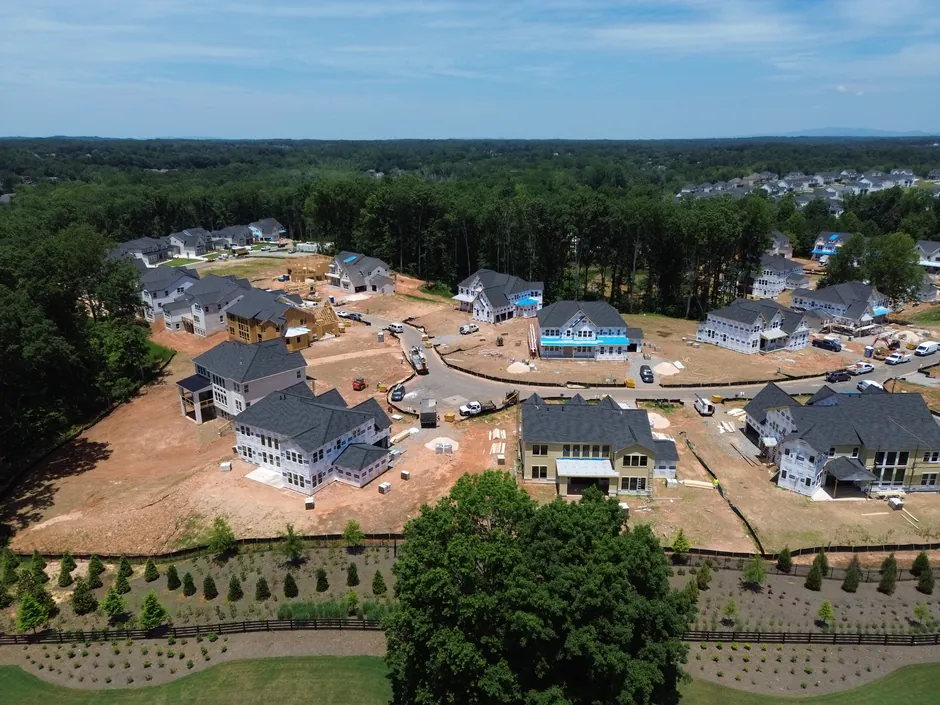
Different types of roof ventilation systems we install
Effective roof ventilation requires the right combination of intake and exhaust vents that work together to move air through your attic space. We install various types of ventilation components and design complete systems that provide optimal airflow for your specific home and roof design. Understanding different ventilation options helps homeowners make informed decisions about improving their systems. Ridge vents provide continuous exhaust ventilation along the peak of your roof and are often the most effective type of exhaust ventilation for most homes. Ridge vents take advantage of natural airflow patterns and provide consistent ventilation regardless of wind direction. We install ridge vents that blend with your roofline while providing maximum airflow capacity. Soffit vents provide intake ventilation under the eaves of your roof and work together with ridge vents to create continuous airflow through your attic space. Proper soffit ventilation is critical for ridge vent effectiveness because exhaust vents only work well when adequate intake air is available. We install soffit vents in locations and sizes that balance with exhaust ventilation. Gable vents are installed in the walls at the ends of gabled roofs and can provide both intake and exhaust ventilation depending on wind conditions and roof design. Gable vents can be particularly effective for certain roof styles and can supplement other ventilation types when additional airflow is needed. Static roof vents are individual exhaust vents installed through the roof surface and can provide additional exhaust capacity when ridge vents aren't possible or adequate. Static vents are available in various sizes and styles and can be effective when properly located and sized for your specific roof. Turbine vents use wind power to create additional exhaust capacity and can be effective in areas with consistent wind patterns. Turbine vents require proper installation and maintenance but can provide enhanced ventilation performance when conditions are appropriate. Attic fans provide powered exhaust ventilation when natural ventilation isn't adequate for your specific situation. We install attic fans with proper controls and safety features when they're the best solution for your ventilation needs. We prefer natural ventilation when possible but recognize that powered solutions are sometimes necessary.
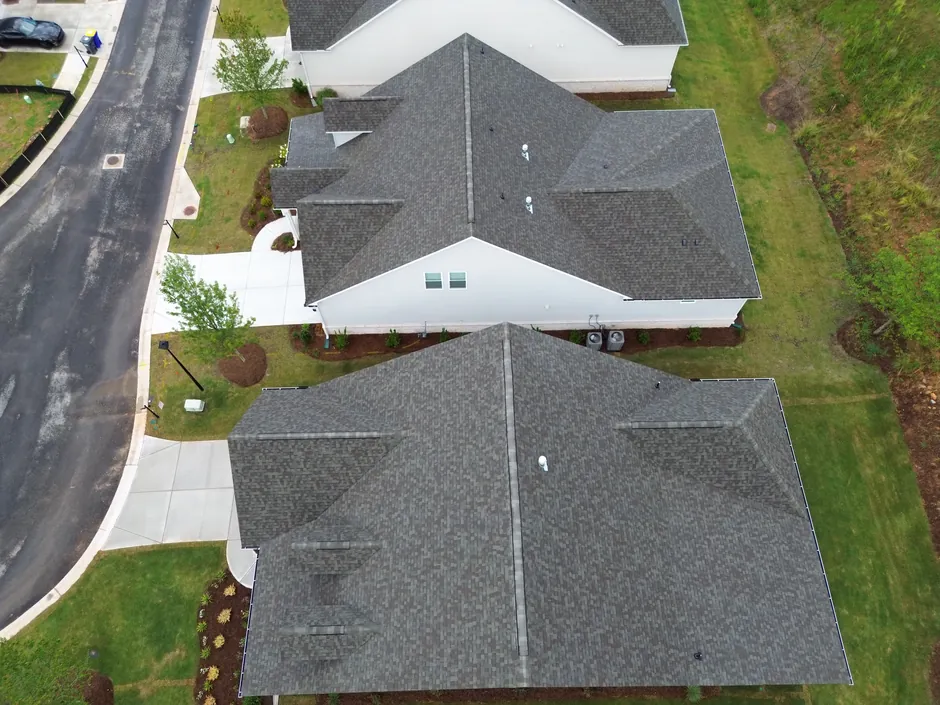
Signs your home needs better roof ventilation
Many homeowners don't realize they have ventilation problems until they cause expensive damage or significant comfort issues. Understanding the warning signs of poor roof ventilation helps homeowners address problems before they become serious and costly. We help homeowners identify these signs and provide effective solutions. High energy bills during summer months can indicate that your air conditioning system is working harder than necessary to cool your home. Poor attic ventilation allows heat to build up and transfer into living spaces, forcing cooling systems to run longer and more frequently. Proper ventilation can reduce cooling costs significantly. Hot spots in certain rooms, especially upstairs rooms, often indicate inadequate ventilation that allows heat buildup in attic spaces above those areas. Rooms that are consistently warmer than others may be located under poorly ventilated attic areas that transfer excess heat into living spaces. Condensation problems in attics, including water droplets on surfaces, damp insulation, or foggy windows, indicate high humidity levels that proper ventilation should remove. Condensation problems can lead to mold growth, wood rot, and insulation damage if not addressed promptly through improved ventilation. Mold or mildew odors coming from attics or certain rooms can indicate moisture problems caused by inadequate ventilation. Mold growth requires moisture and can cause health problems and structural damage if not addressed through improved ventilation and moisture control. Ice dams during winter weather, while uncommon in our area, can occur when heat buildup in attics causes snow to melt and refreeze at roof edges. Ice dams can cause significant roof and interior damage and often indicate ventilation problems that allow excessive heat buildup. Premature aging of roofing materials, including curled or cracked shingles, can result from excessive heat buildup in attics due to poor ventilation. Shingles exposed to extreme attic temperatures age much faster than those protected by proper ventilation. Uncomfortable indoor temperatures despite adequate air conditioning can indicate that heat transfer from poorly ventilated attics is overwhelming your cooling system's capacity. Proper ventilation helps maintain more consistent indoor temperatures and reduces strain on cooling systems.
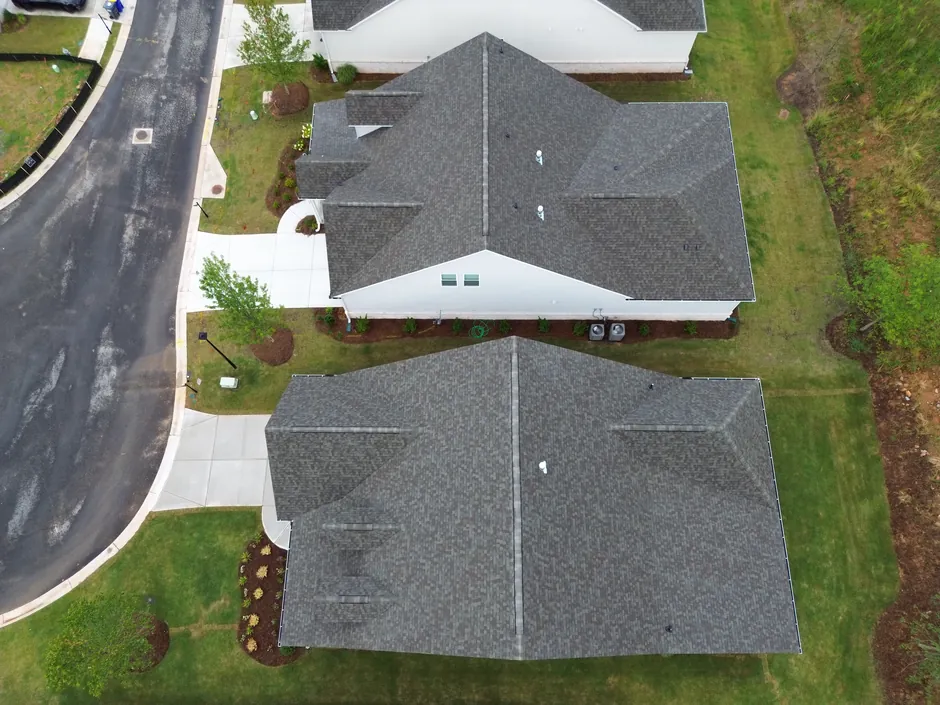
Roof ventilation installation process and methods
Our roof ventilation installation process is designed to provide effective airflow improvement with minimal disruption to your daily life. We use proven installation methods and quality materials to ensure your new ventilation system works properly and lasts for many years. Understanding our process helps homeowners know what to expect during ventilation improvements. Assessment and planning begins with examining your current ventilation system and understanding your specific needs and goals. We look at your attic space, existing vents, roof design, and any problems you're experiencing. We measure your attic area and calculate ventilation requirements based on building standards and local climate conditions. Design and recommendation phase includes determining the best combination of intake and exhaust vents for your specific roof and creating a balanced system that provides optimal airflow. We consider your roof style, existing features, and budget to recommend the most effective ventilation improvements. Material selection focuses on proven ventilation products that perform well in North Georgia's climate and provide good value for homeowners. We use quality vents and installation materials from reliable manufacturers but don't automatically recommend the most expensive options. We help you choose products that fit your budget while providing effective performance. Installation preparation includes protecting your home and belongings from debris and damage during installation work. We use tarps and plastic sheeting to protect areas below work zones and position equipment to minimize impact on your property and landscaping. Ridge vent installation involves cutting openings along the roof ridge and installing continuous venting that blends with your roofline. We use proper cutting techniques and weatherproofing methods to ensure ridge vents provide maximum airflow while maintaining weather resistance. Soffit vent installation requires cutting openings in soffit panels and installing vents that provide adequate intake airflow. We calculate proper vent sizing and spacing to ensure adequate intake air for your exhaust ventilation system. Testing and adjustment ensures that your new ventilation system is working properly and providing the airflow improvement you need. We check that air is moving through the system as designed and make any necessary adjustments to optimize performance.
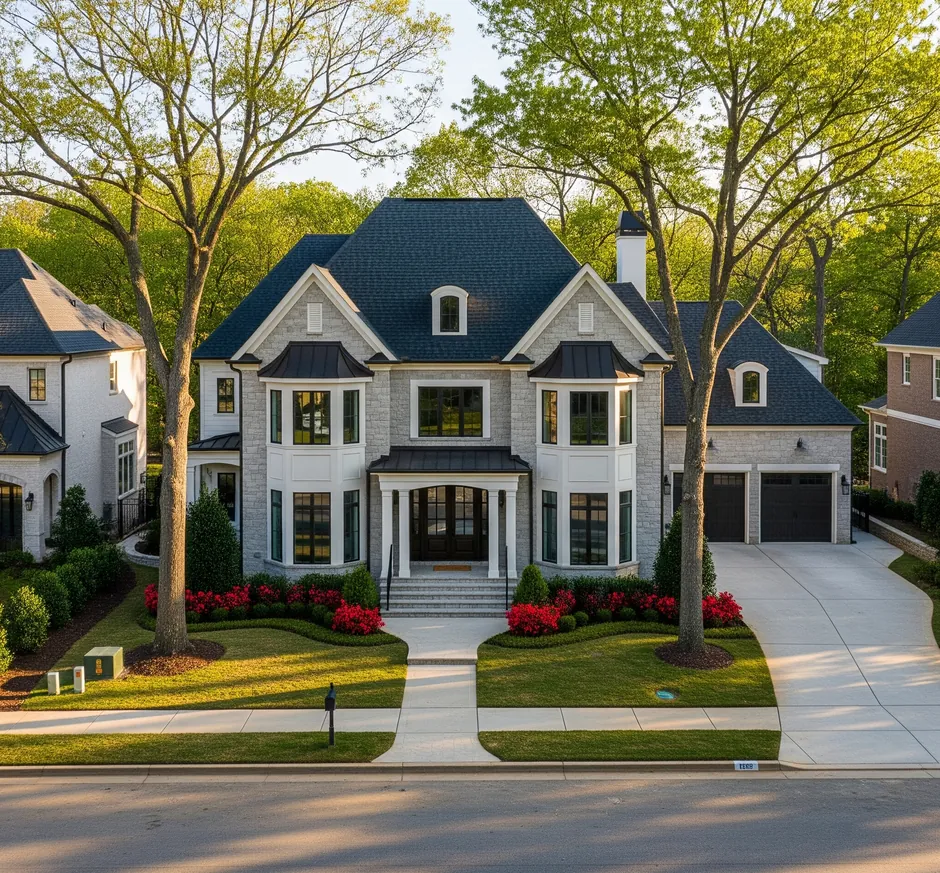
Ventilation costs and return on investment
Roof ventilation improvements are among the most cost-effective home improvements you can make, providing benefits that often far exceed the initial investment. Understanding ventilation costs and benefits helps homeowners make informed decisions about improving their roof systems and protecting their homes. Installation costs for basic ventilation improvements are typically much lower than other major home improvements while providing significant benefits for comfort, energy efficiency, and home protection. Simple ventilation improvements like adding ridge vents or soffit vents can often be completed for reasonable costs that pay for themselves through energy savings. Material costs vary depending on the type and amount of ventilation needed, but most ventilation components are relatively inexpensive compared to other roofing improvements. We help homeowners choose cost-effective ventilation solutions that provide good value while meeting their specific needs and budgets. Labor costs for ventilation installation reflect the time and skill required to design effective systems and install components properly. While ventilation installation requires experience and attention to detail, labor costs are typically reasonable compared to other roofing improvements. Energy savings from proper ventilation can be substantial during North Georgia's long, hot summers. Homeowners often see noticeable reductions in cooling costs after ventilation improvements, and these savings continue year after year. Many homeowners report that ventilation improvements pay for themselves through energy savings within a few years. Comfort improvements from better ventilation include more consistent indoor temperatures, reduced hot spots, and improved overall comfort throughout the home. These comfort benefits are immediate and continue for the life of the ventilation system. Roof protection benefits from proper ventilation include extended shingle life, reduced risk of moisture damage, and prevention of problems that could require expensive repairs. These protection benefits provide long-term value that far exceeds the initial investment in ventilation improvements. Home value improvements from proper ventilation enhance marketability and can increase resale value. Buyers increasingly look for energy-efficient features, and proper ventilation is recognized as an important home performance feature. Health benefits from improved indoor air quality and reduced moisture problems provide ongoing value for family health and comfort. Proper ventilation helps prevent mold and moisture problems that can affect indoor air quality and family health.
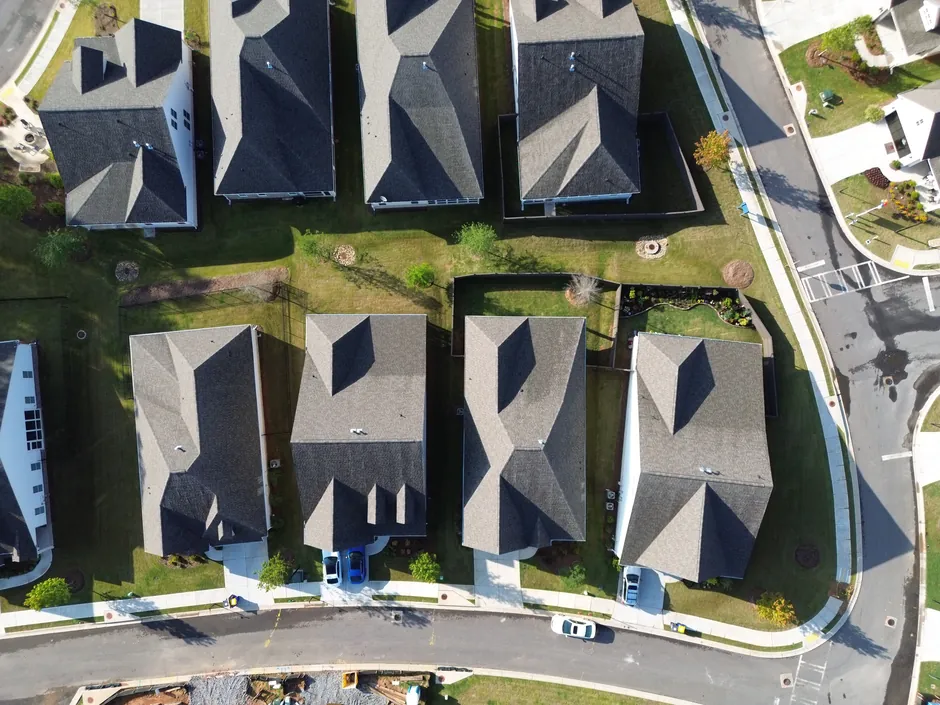
Working with different roof types and ventilation challenges
Different roof styles and designs present unique ventilation challenges that require specific solutions and approaches. We have experience working with all common roof types found in Suwanee and understand how to design effective ventilation systems for each style. Our knowledge of different roof challenges helps us provide appropriate solutions regardless of your home's design. Gabled roofs are the most common style in our area and typically offer the most straightforward ventilation solutions. Gabled roofs work well with ridge vents for exhaust and soffit vents for intake, creating effective airflow patterns that remove hot, humid air efficiently. We can usually design effective ventilation systems for gabled roofs using standard components. Hip roofs present more complex ventilation challenges because they don't have continuous ridge lines that accommodate traditional ridge vents. Hip roofs often require combinations of different vent types to provide adequate exhaust ventilation. We design hip roof ventilation systems using multiple vent types strategically located for optimal airflow. Complex rooflines with multiple sections, valleys, and intersections require careful planning to ensure adequate ventilation for all attic areas. Complex roofs may have multiple attic spaces that need independent ventilation or connected systems that provide airflow to all areas. We assess complex roofs carefully and design comprehensive ventilation solutions. Low-slope roofs present unique ventilation challenges because traditional vents may not work effectively with minimal roof slope. Low-slope roofs may require special vent types or powered ventilation to overcome airflow limitations created by minimal slope. Cathedral ceilings and vaulted spaces require different ventilation approaches because traditional attic ventilation methods don't apply. These spaces need ventilation systems designed specifically for their unique airflow requirements and space limitations. Older homes may have ventilation challenges related to original construction methods, limited soffit space, or roof designs that don't accommodate modern ventilation solutions. We work with older home constraints to provide effective ventilation improvements within existing limitations. Addition and renovation projects often create ventilation challenges when new roof sections are added or existing roofs are modified. We help ensure that ventilation systems work properly with modified roof designs and provide adequate airflow for all areas.
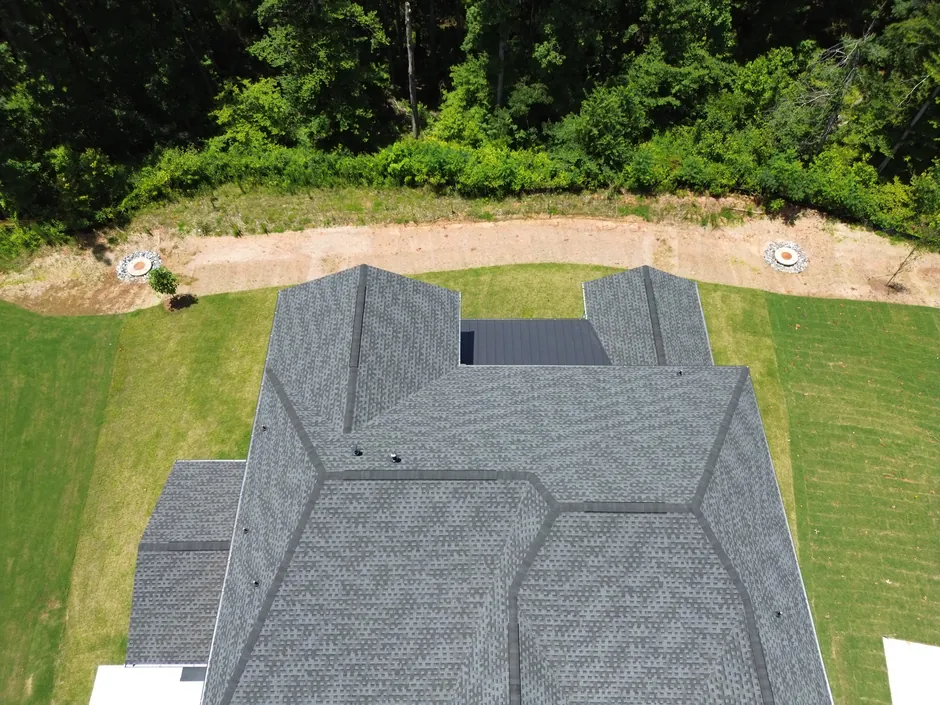
Seasonal ventilation considerations and maintenance
Roof ventilation systems work year-round in North Georgia's variable climate, but different seasons create different performance requirements and maintenance needs. Understanding seasonal considerations helps homeowners get maximum benefit from their ventilation systems and maintain proper performance throughout the year. Summer performance is when ventilation systems work hardest to remove hot, humid air from attic spaces and help keep homes cool and comfortable. Summer is when ventilation problems become most obvious through high energy bills, uncomfortable rooms, or signs of moisture problems. We recommend checking ventilation performance before summer heat arrives. Spring preparation includes checking ventilation systems after winter weather and ensuring that vents are clear of debris that might have accumulated during winter. Spring is also an excellent time to assess ventilation performance and make improvements before summer heat tests the system. Fall maintenance focuses on preparing ventilation systems for winter weather and removing debris like leaves that can block vents and reduce airflow. Fall is also when we recommend checking for any damage from summer storms that might affect ventilation performance. Winter considerations include ensuring that ventilation continues to work properly during cold weather while preventing heat loss through inadequate insulation or air sealing. Winter ventilation helps prevent moisture problems that can occur when warm indoor air meets cold surfaces. Debris removal is important year-round but especially during fall when leaves and other organic debris can block soffit vents and reduce intake airflow. We recommend regular inspection and cleaning of ventilation components to maintain optimal performance. Pest prevention includes checking that ventilation components have appropriate screening and barriers to prevent birds, insects, and small animals from entering attic spaces through vents. Proper pest prevention maintains ventilation effectiveness while protecting your home. Weather damage assessment after storms includes checking that ventilation components weren't damaged by wind, hail, or debris. Storm damage can affect ventilation performance and should be addressed promptly to maintain proper airflow. Performance monitoring throughout the year helps identify any changes in ventilation effectiveness that might indicate maintenance needs or system problems. We recommend annual ventilation system checkups to ensure continued optimal performance.
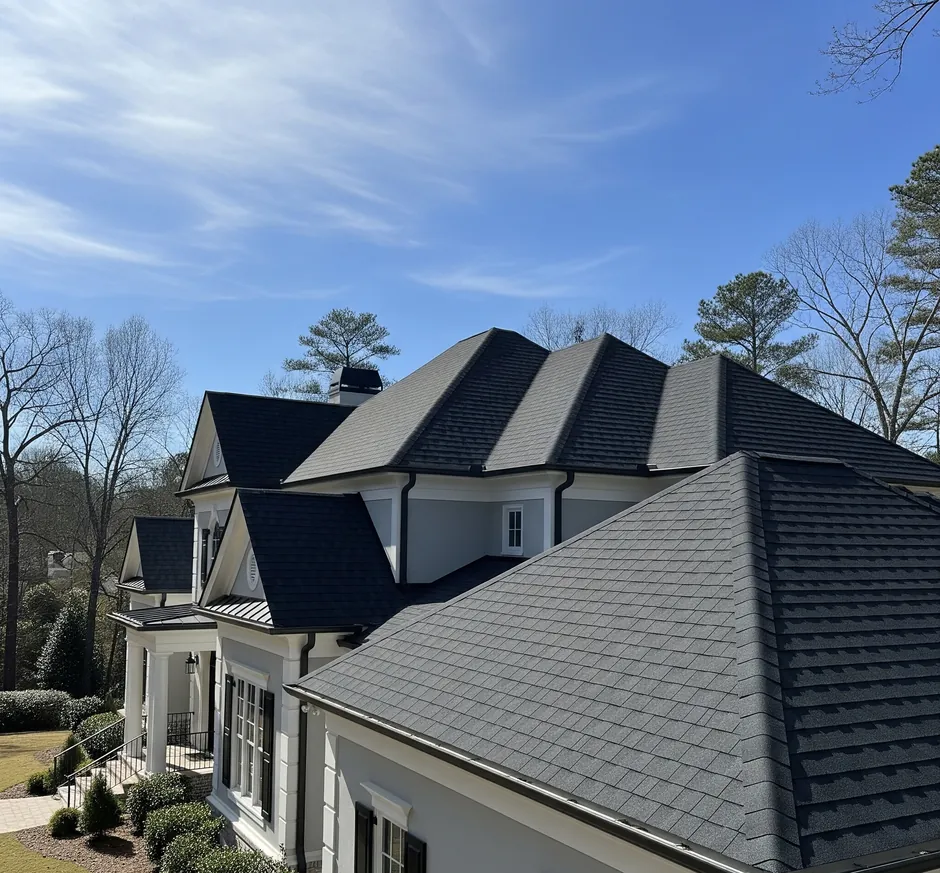
Working with energy efficiency and building codes
Proper roof ventilation is increasingly recognized as an important component of home energy efficiency and is often required by building codes for new construction and major renovations. We understand current codes and energy efficiency standards that affect ventilation requirements and can help homeowners meet or exceed these standards. Building code requirements specify minimum ventilation standards for different roof types and attic sizes. These requirements are designed to ensure adequate airflow for moisture control and building protection. We ensure that all ventilation work meets or exceeds current code requirements for your specific situation. Energy efficiency standards increasingly recognize proper ventilation as an important factor in home performance. Energy-efficient homes require balanced ventilation systems that work together with insulation and air sealing to control moisture and temperature effectively. We can help design ventilation systems that contribute to overall energy efficiency. Insulation coordination is critical because ventilation and insulation work together to control moisture and temperature in attic spaces. Proper ventilation allows insulation to work more effectively while preventing moisture problems that can damage insulation and reduce its effectiveness. Air sealing considerations affect ventilation design because uncontrolled air leaks can interfere with proper ventilation patterns and reduce system effectiveness. We can help identify air sealing needs that support proper ventilation function and overall energy efficiency. Green building standards often include specific ventilation requirements that exceed minimum code standards. We can help homeowners who want to meet green building standards or achieve energy efficiency certifications that require enhanced ventilation performance. Utility rebates and incentives are sometimes available for energy efficiency improvements that include proper ventilation. We can help homeowners understand available programs and ensure that ventilation improvements qualify for any available incentives. Future planning considerations include designing ventilation systems that can accommodate future energy efficiency improvements or changes in building codes. We help homeowners plan ventilation improvements that provide immediate benefits while supporting future upgrade options.
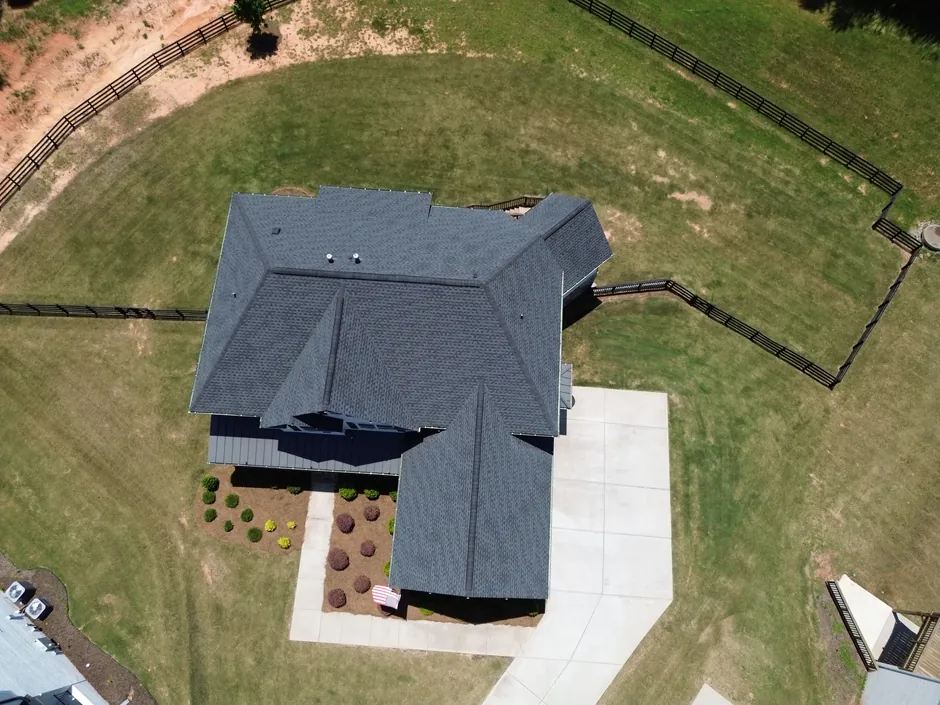
Why choose local Suwanee ventilation specialists
Choosing local contractors for roof ventilation improvements provides significant advantages over using contractors from other areas. We know Suwanee's climate, understand local building practices, and have relationships throughout the community that benefit our customers. Our local presence also means we're accountable to the community for our work and available for ongoing service. We understand North Georgia's specific climate challenges that make proper ventilation especially important for home comfort and protection. Our hot, humid summers and variable weather patterns create specific ventilation requirements that contractors from other climates might not fully understand. We design ventilation systems specifically for our local conditions. Our relationships with local suppliers mean we can get quality ventilation materials quickly and often at better prices than contractors who don't buy locally. We can also get replacement parts and specialty items when needed for service or upgrades. These supplier relationships benefit our customers through competitive pricing and reliable material availability. We know local building codes, permit requirements, and inspection processes that affect ventilation work. Our familiarity with local officials and procedures helps projects proceed smoothly and ensures that all work meets current standards. We can also navigate homeowner association requirements that might affect ventilation improvements. Being local means we're available for follow-up service, warranty work, and ongoing maintenance throughout the life of your ventilation system. We don't disappear after completing installations - we're here for the long term and want every customer to be satisfied with their ventilation improvements for years to come. We're invested in Suwanee's success because it's our home too. We support local businesses, participate in community activities, and want our neighbors to have comfortable, efficient homes that enhance our community. This community connection influences everything we do and ensures we provide quality work that benefits both individual homeowners and the community. We've built our business through referrals and repeat customers, which means every ventilation installation must meet high standards for effectiveness and customer satisfaction. Our reputation depends on providing ventilation solutions that actually work and deliver the benefits homeowners expect from proper roof ventilation.
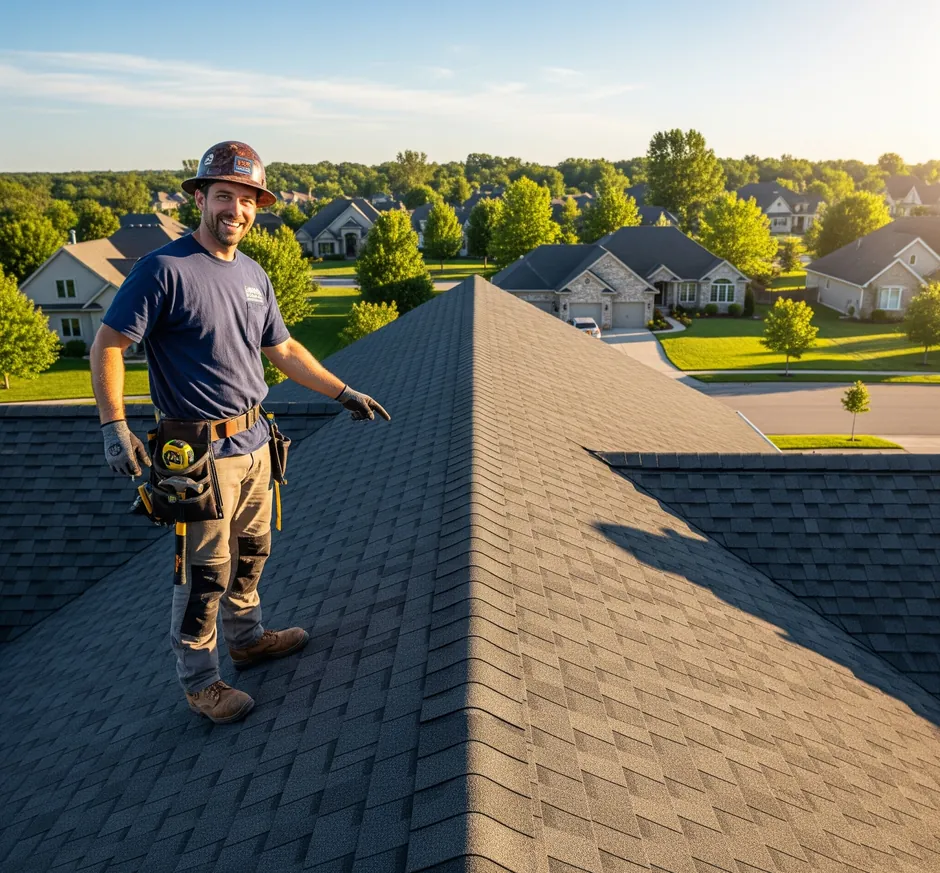
Ready for better roof ventilation in Suwanee?
Don't let poor ventilation cause comfort problems or high energy bills in your home. Contact your neighborhood ventilation specialists today for honest assessments, effective solutions, and the kind of dependable installation work that keeps homes comfortable and protected year-round. We've been helping Suwanee homes breathe properly for over twenty-four years, and we'd be honored to help yours too.
Get Free Estimate- Phone: (470) 888 0030
- Address: Suwanee, GA